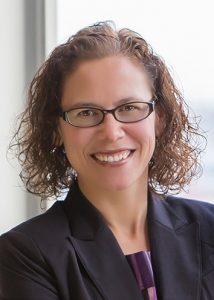 Working with an insurer who will proactively recruit dental providers into your network will help your employees see cost savings.
Working with an insurer who will proactively recruit dental providers into your network will help your employees see cost savings.
When employers and brokers seek out provider networks for employee plans, they tend to favor the ones boasting the highest numbers. The more preferred providers, the more likely that employees will be able to see an in-network dentist. Yet having 99 percent of all dentists in your network means nothing if you have employees seeing providers in that one percent. So the question is not really "which is the largest network," it's "which is the right network for my employees?"
Network size is not the differentiating factor it used to be. At this point most networks are extremely robust in size and breadth. The key here is to examine what the numbers actually mean. Many networks use different quantifiers for their network size. Some count actual dentists, while others count office locations. You could count one provider four times if they see patients at four different sites–but then the question is whether this really provides expanded provider access, since the dentist is only available at each site on certain days.
You can spot this quantifier as "referable locations or access points" vs. "unique dentists" when choosing a network. Many carriers will offer a disruption analysis to determine how many employees' dentists will be in a new network, so you can assess when switching insurers.
Related: 5 best, 5 worst states for dental health
In a recent Sun Life survey, we found that 87 percent of respondents use an in-network dentist, most of whom (78 percent) believe this will save them money. The word is out, and people know the value of in-network care. Working with an insurer who will proactively recruit dental providers into your network will help your employees see cost savings while driving down the overall cost of coverage. It is more impactful to bring a dentist into a new network than to try and steer employees toward switching dentists. This allows people to keep a trusted, conveniently located provider they've become comfortable with, and it means you are offering a dental network that is continuously growing with unique dentists.
It is also important to examine the actual discounts of a provider's normal charge that PPOs negotiate with them. The greater the discount, the less out-of-pocket spending for your employees.
When choosing a dental insurer, here are five considerations to make:
1. Follow the credentials
Choose an insurer that follows a standard, periodic process to review the dentists that have applied to be in their network. They should be checking DEA reports, looking for board sanctions, etc. This ensures that dentists in their network are appropriately licensed and have adequate insurance coverage.
2. Up-to-date information
Check the accuracy of the insurer's online provider directory. An accurate directory with consistent updates will minimize employee frustration, and also lends well to newer technologies, like constant access via smartphones and tablets.
3. Are the dentists sticking around?
Make sure your network is one that dentists actually like to be in. Every network should see some level of turnover or termination, as dentists retire or relocate, but a high level of turnover likely means dissatisfaction with the network among providers. And if a carrier reports no or very few network terminations, this could indicate that they simply don't keep their directories updated.
4. Planning for growth
The right dentists for your network are the ones your employees want to visit. Make sure your carrier is dedicated to actively recruiting the dentists that matter to your employees, and that this targeted growth is part of their overall network strategy.
5. Fraud protection
Your dental carrier should have a program that makes it simple for both members and dentists to report suspected fraud and abuse. Addressing these problems quickly will keep overall costs lower, and create a higher level of satisfaction among dentists, their patients and the employer.
 Stacia Almquist is vice president, dental and vision, Sun Life U.S.
Stacia Almquist is vice president, dental and vision, Sun Life U.S.
Read more:
© Touchpoint Markets, All Rights Reserved. Request academic re-use from www.copyright.com. All other uses, submit a request to [email protected]. For more inforrmation visit Asset & Logo Licensing.






